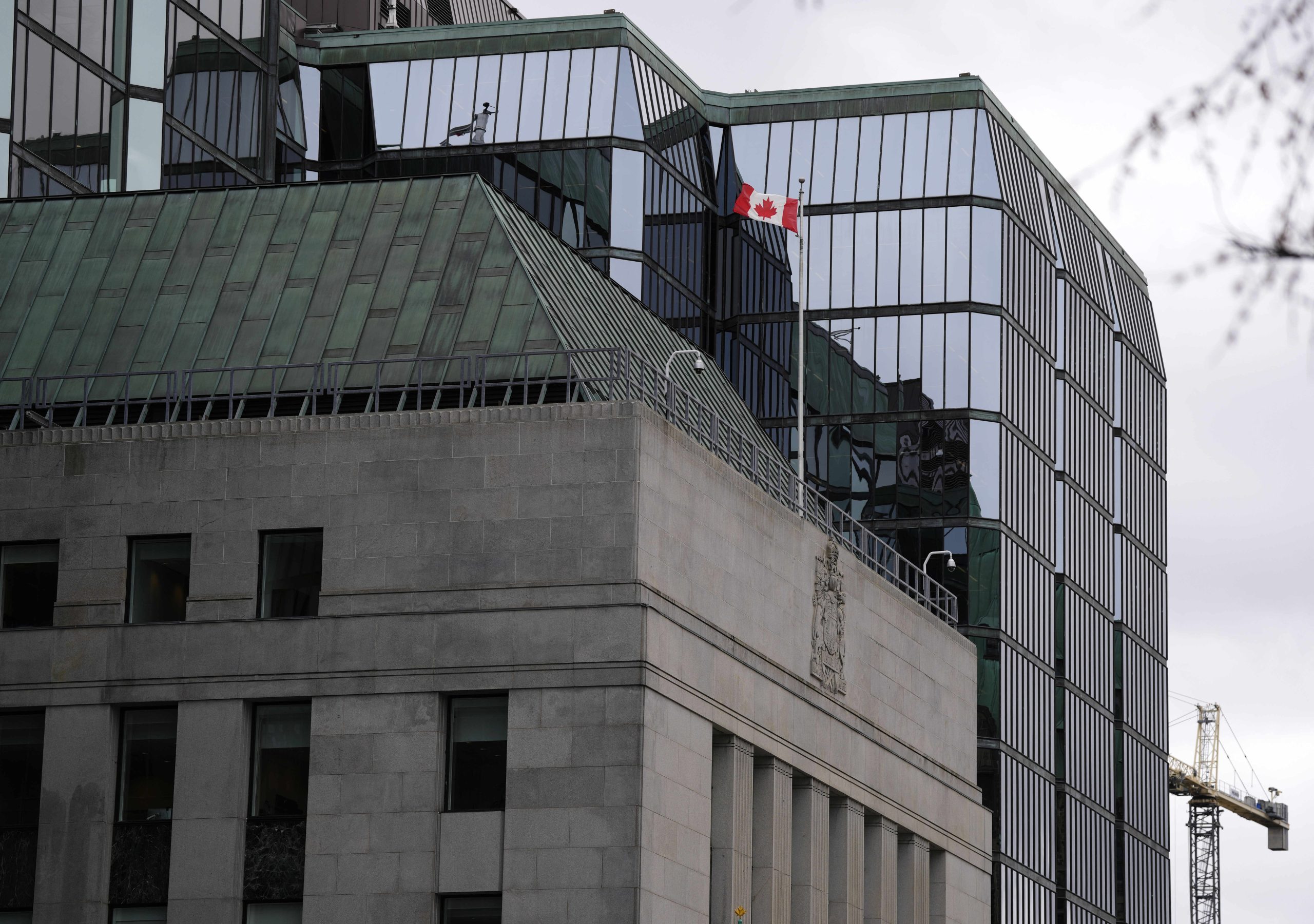Bank of Canada holds interest rate at 2.75%, says ‘could be a need’ for future cut
The Bank of Canada held interest rates steady for a second consecutive meeting, but officials said there may be a need to cut borrowing costs if the economy weakens and inflation remains contained as US tariffs make an impact.
Officials led by governor Tiff Macklem kept the policy rate at 2.75% on Wednesday, matching expectations of markets and the majority of economists in a Bloomberg survey.
Policymakers said they held borrowing costs steady as they gain more information on US President Donald Trump’s trade conflict, which they called “the biggest headwind facing the Canadian economy” as it slams exports and adds to uncertainties for consumers and businesses.
At the same time, officials said the economy held up stronger than expected in the first quarter, and flagged a recent surge in core inflation measures.
“With uncertainty about US tariffs still high, the Canadian economy softer but not sharply weaker, and some unexpected firmness in recent inflation data, governing council decided to hold the policy rate as we gain more information on US trade policy and its impacts,” policymakers said in a statement.
While policymakers said there was “clear consensus” to pause and wait for more information on how the trade dispute plays out, the bank introduced some limited guidance on where borrowing costs are likely headed.
“On balance, members thought there could be a need for a reduction in the policy rate if the economy weakens in the face of continued US tariffs and uncertainty, and cost pressures on inflation are contained,” Macklem said in his opening remarks, adding that policymakers had a “diversity” of views on the future rate path.
Combined, the communications show the central bank is comfortable waiting for clearer signals on how the trade dispute will evolve. At the same time, policymakers are actively discussing resuming monetary easing should the economy deteriorate and inflation remain under control.
A weakening economy for the rest of the year is the base case in a Bloomberg survey of economists, with gross domestic product forecast to contract in the middle two quarters of this year. Inflation is seen averaging around the bank’s 2% target throughout 2025.
“July looks more promising for a quarter-point ease if, as we expect, the jobless rate continues to move higher, and inflation in items not subject to tariff pressures eases off a bit,” Avery Shenfeld, chief economist at Canadian Imperial Bank of Commerce, said in a report to investors.





